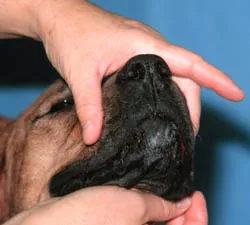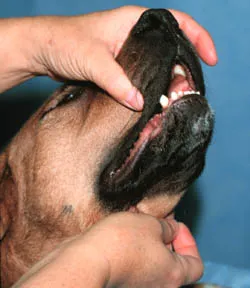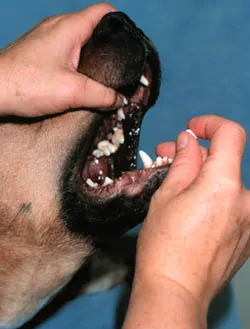Giving your Dog Pills can sometimes feel like a daunting challenge, but with the right approach and a calm demeanor, you can ensure your beloved pet receives the vital medications it needs for its health and well-being. This guide focuses on safe and effective methods for administering dog pills, helping you navigate this common aspect of pet care with confidence. Many dog owners find themselves in this situation, whether it’s for a short course of antibiotics or a long-term prescription, and mastering the technique is key to stress-free dosing. You may also want to explore best over the counter flea meds for preventative care.
Considerations Before Giving Your Dog Pills
Before attempting to give your dog pills, it’s crucial to understand your veterinarian’s specific instructions. They will advise whether the medication should be given with food or on an empty stomach. This detail can significantly impact both the medication’s effectiveness and your dog’s willingness to take it.
With or Without Food
If the tablet or capsule can be given with food, you have a convenient option. Try placing the medication inside a small ball of canned dog food or a piece of cheese. A common trick is to give your dog a plain “test” ball first to gauge if they’ll eat it readily and whether they chew or gulp. Dogs often gulp food, which is ideal for swallowing a pill unnoticed. However, if your dog chews the food, they might spit out the pill, which can partially dissolve and become unpleasant or difficult to handle. A bitter taste from a bitten pill can make subsequent attempts much harder.
Safety First: Avoiding Bites
Regardless of the method you choose, safety is paramount. Always use caution to avoid being bitten, as a dog’s mouth contains numerous bacteria, and bites can lead to deep punctures and infections. If a bite occurs, thoroughly clean the wound and seek medical attention promptly. Keeping your dog calm and comfortable throughout the process is essential, reducing the likelihood of defensive reactions. For ongoing preventative care, consider looking into monthly flea and tick treatment for dogs options.
Step-by-Step Guide to Administering Dog Pills or Capsules
If hiding medication in food isn’t effective, direct administration of dog pills or capsules may be necessary. Follow these steps carefully to ensure the pill is given correctly and safely.
Preparation: Holding Your Dog
Start by gently holding your dog’s head from the top. If you are right-handed, use your left hand. For dogs with longer snouts, hold the upper jaw between your thumb and index finger. For shorter-nosed breeds, you might hold the head similarly to how you would a cat, providing a firm but gentle grip.
 A person gently holding a dog's head, preparing to administer oral medication
A person gently holding a dog's head, preparing to administer oral medication
Opening the Mouth and Placing the Pill
Once you have a secure hold, gently tilt your dog’s head back. Dogs possess strong jaw muscles, and simply tilting the head helps the lower jaw drop open sufficiently.
 A person tilting a dog's head upwards to facilitate opening its mouth for medication
A person tilting a dog's head upwards to facilitate opening its mouth for medication
As you open the mouth, gently fold the upper lip over the teeth. This acts as a protective measure: if the dog accidentally bites down, it will bite its own lip rather than your hand. Place your thumb on the roof of the dog’s mouth. While folding the lip over the teeth isn’t strictly necessary, it significantly reduces the risk of a bite.
With the pill or capsule held securely between your thumb and index finger in your right hand, use your right middle finger to pull open the lower jaw. Position your middle finger over the small incisor teeth, carefully avoiding the sharp canine teeth (fangs).
 A person holding a small pill between their thumb and index finger, gently opening a dog's lower jaw with their middle finger
A person holding a small pill between their thumb and index finger, gently opening a dog's lower jaw with their middle finger
Drop the dog pill as far back over the tongue as possible. The goal is to get it past the hump of the tongue to prevent your dog from spitting it out. Immediately close your dog’s mouth after placing the pill.
 A person carefully placing a small pill far back on a dog's tongue
A person carefully placing a small pill far back on a dog's tongue
Ensuring Your Dog Swallows
After closing the mouth, gently stroke your dog’s neck or blow sharply on its nose. Both actions can encourage your dog to swallow the medication. Observe for swallowing cues, such as licking its lips.
If you find that the pill isn’t going far enough back on the tongue, or if your dog spits it out, you may need to use your index finger and thumb to gently push the pill further over the back of the tongue. This requires working rapidly to minimize the time your fingers are inside your dog’s mouth, further reducing the chance of a bite.
Using Pilling Devices
For pet owners who are uncomfortable placing their fingers inside their dog’s mouth, or for dogs that are particularly resistant, there are several styles of “pilling devices” available. These tools are designed to help you place a pill or capsule over the base of the tongue without direct finger contact. Discussing these options with your veterinarian can help you find a suitable solution. Keeping your dog free from pests is equally important, so check out best over the counter tick prevention for dogs.
Administering Liquid Medications to Dogs
While the focus here is on dog pills, liquid medications are also a common form of treatment. Liquid medications are typically given into the pouch formed between the teeth and cheek. Quickly squirt the measured dose into this pouch, then hold the mouth closed and stroke the dog’s neck or sharply blow on its nose to encourage swallowing.
 A medicine syringe being emptied into the side of a dog's mouth, within the cheek pouch
A medicine syringe being emptied into the side of a dog's mouth, within the cheek pouch
It is crucial to avoid tilting your dog’s head backward when administering liquids, as this increases the risk of the liquid accidentally entering the windpipe, potentially leading to aspiration. For various health concerns, including finding medicine for ticks and fleas in dogs, always consult a professional.
When to Consult Your Veterinarian
If you consistently find it difficult to give your dog pills or capsules, don’t hesitate to speak with your veterinarian. They may be able to offer alternative solutions, such as compounding the medication into a flavored liquid suspension or suggesting different administration techniques. It’s important to note that not all medications retain their effectiveness when suspended in liquid, so always consult your vet before altering any prescribed medication. If your dog exhibits any adverse reactions or struggles with discomfort, such as itching, knowing about anti itch medication for dogs can be helpful, but always follow professional advice.
Conclusion
Successfully giving your dog pills is an essential skill for any pet owner, ensuring your companion receives the necessary care for their health. By remaining calm, following these step-by-step instructions, and understanding your dog’s individual temperament, you can make medication time less stressful for both of you. Always prioritize safety and consult your veterinarian if you encounter persistent difficulties or have any concerns about your dog’s treatment plan.
Disclaimer: This information is provided for general guidance and is not a substitute for professional veterinary care. Always follow the specific instructions and advice provided by your veterinarian. Dog Care Story assumes no liability for injury to you or your pet incurred by following these descriptions or procedures.
